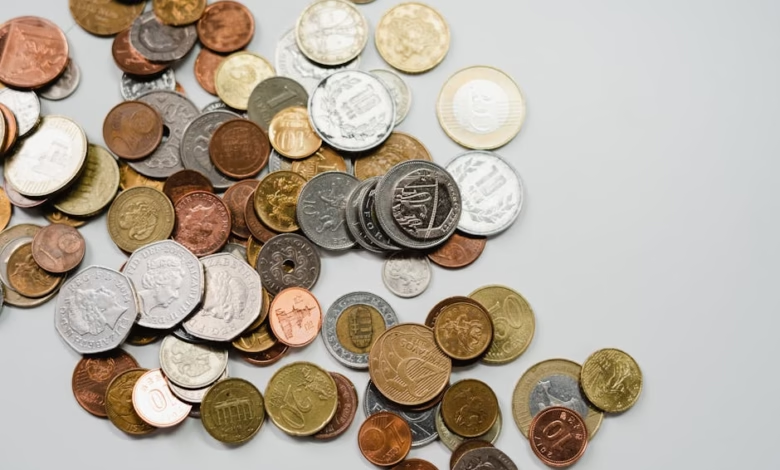The Role of Gold in Forex and Global Trade: Understanding Its Influence on Currency Exchange and Economic Stability

In the complex landscape of global finance, gold remains a steadfast pillar, revered not only as a valuable commodity but also as a crucial player in currency exchange and international trade. As a safe haven asset, gold has long been sought after during periods of economic uncertainty, making it an essential consideration for investors and traders alike. This article delves into the multifaceted role of gold in the realm of forex and global trade, exploring its significance as a hedge against inflation, the influence of gold prices on currency exchange rates, and the impact of central banks' gold reserves on overall currency stability. From gold investment strategies to the dynamics of gold market trends, we will examine how this timeless metal shapes financial landscapes and drives global economic activity. Join us as we uncover the intricate relationship between gold and the currencies that define our world today.
- 1. The Significance of Gold as a Safe Haven Asset in Forex and Global Trade
- 2. Understanding Gold Market Trends: How Gold Prices Influence Currency Exchange
- 3. The Impact of Central Banks' Gold Reserves on Global Currency Stability
1. The Significance of Gold as a Safe Haven Asset in Forex and Global Trade
Gold has long been recognized as a safe haven asset, particularly in the realms of forex and global trade. Its intrinsic value and historical significance make gold a reliable investment during times of economic uncertainty. Investors often turn to gold as a hedge against inflation, currency devaluation, and geopolitical instability. This behavior underscores the importance of understanding gold market trends and the dynamics of gold prices in relation to global economic conditions.
One of the primary reasons gold is considered a safe haven asset is its limited supply and enduring value. Unlike fiat currencies, which can be printed in excess, gold reserves are finite. This scarcity can lead to increased demand during times of crisis, driving up gold prices and providing protection against market volatility. As central banks around the world hold substantial gold reserves, they reinforce the metal's status as a cornerstone of financial stability. The practice of central banks investing in gold, alongside the rise of gold ETFs and gold futures, further enhances accessibility for individual investors looking to diversify their portfolios.
Moreover, the gold trade is multifaceted, encompassing various forms of investment such as gold coins, gold bullion, and luxury gold jewelry. Each of these forms serves different purposes in the global market. For instance, gold coins investing has gained popularity among collectors and investors alike, as they often appreciate in value over time. The physical gold market also remains robust, with demand for gold bars and coins reflecting a growing interest in tangible assets.
Sustainable gold mining practices are increasingly relevant as global gold demand rises. Consumers and investors are becoming more aware of the environmental and ethical implications of gold production. This awareness has led to a surge in interest in gold recycling and sustainable gold mining initiatives, ensuring that the industry can meet demand without compromising ecological integrity.
In the context of modern financial markets, gold's relationship with cryptocurrency is noteworthy. As digital currencies gain traction, many investors are looking at gold and cryptocurrency as complementary assets. This synergy highlights the evolving landscape of investments and the continued relevance of gold in a diversified portfolio.
In summary, gold remains a significant player in forex and global trade due to its status as a safe haven asset. Its historical role as a store of value, coupled with the complexities of gold market analysis, underscores the importance of gold investment in today's economic climate. As gold prices fluctuate and market dynamics change, investors must stay informed about gold production, refining processes, and the broader implications of gold trade on the global economy.
2. Understanding Gold Market Trends: How Gold Prices Influence Currency Exchange
Understanding gold market trends is essential for grasping how gold prices influence currency exchange. Gold has long been regarded as a safe haven asset, particularly during times of economic uncertainty or inflation. When investors seek stability, they often turn to gold investments, driving demand and subsequently influencing its market prices.
The relationship between gold prices and currency exchange is multifaceted. As gold prices rise, currencies of countries that are major producers or holders of gold, such as those with substantial gold reserves, may strengthen. For instance, nations with significant gold mining operations and refined gold production can experience increased currency value as the gold market trends favor higher prices. Conversely, currencies from countries with low gold reserves or limited gold production may weaken, especially if they are heavily reliant on imports for their gold supply.
Gold ETFs (Exchange-Traded Funds) and gold futures also play a crucial role in the currency exchange landscape. These financial instruments allow investors to speculate on gold prices without necessarily holding physical gold. As trading volumes in gold ETFs rise, it can lead to increased market speculation, impacting currency value based on anticipated changes in gold prices.
Moreover, the interplay between gold and cryptocurrency is becoming increasingly relevant. As digital currencies gain traction, the traditional role of gold as a store of value is being challenged. However, during periods of high volatility in the cryptocurrency market, gold often reasserts itself as a reliable safe haven asset, which can lead to increased gold investment and subsequently affect currency exchange rates.
Additionally, central banks around the world are also significant players in the gold market. They hold substantial gold reserves, and their buying or selling activities can significantly influence gold prices. When central banks increase their gold reserves, it can bolster confidence in their currency, leading to a stronger exchange rate. In contrast, when they sell off their gold holdings, it may signal a lack of confidence, potentially weakening their currency.
In summary, understanding gold market trends is crucial for analyzing how gold prices influence currency exchange. Factors such as central bank policies, gold mining activities, and investor behavior all contribute to this dynamic relationship, highlighting the importance of gold in global trade and currency valuation.
3. The Impact of Central Banks' Gold Reserves on Global Currency Stability
Central banks play a pivotal role in the global economy, and their gold reserves are crucial for maintaining currency stability. As a safe haven asset, gold serves as a buffer against inflation and economic uncertainty, making it an essential part of monetary policy. When central banks hold significant gold reserves, they can bolster confidence in their national currencies, especially during times of financial turmoil. This is particularly relevant given the historical context of the gold standard, where currencies were directly tied to gold, influencing modern monetary systems.
The fluctuation of gold prices can impact the value of currencies. For instance, when central banks increase their gold reserves, it often leads to a rise in gold prices, reflecting heightened demand in the gold market. This can stabilize a currency by providing a tangible asset backing, which reassures investors and traders alike. Conversely, a decrease in gold reserves may lead to volatility in currency values, as markets react to perceived instability.
Moreover, central banks' gold reserves affect global gold demand. When a country’s reserves grow, it can influence the gold trade dynamics, including the prices of gold ETFs, gold bullion, and physical gold. As central banks engage in gold mining, refining, and recycling, they contribute to sustainable gold mining practices, ensuring that the gold market remains robust and environmentally responsible.
Additionally, the strategic use of gold futures and options can help central banks manage currency risks associated with inflation. By diversifying their assets with gold, they can hedge against currency devaluation caused by economic disruptions. This approach is increasingly relevant as central banks evaluate the implications of emerging trends, such as the rise of gold and cryptocurrency interactions, which further complicate the relationship between gold and global currencies.
In conclusion, central banks' gold reserves significantly impact global currency stability. By effectively managing their gold investments, these institutions can navigate through economic challenges, maintain currency value, and influence gold market trends, thereby shaping the future of global trade and finance.
In conclusion, the multifaceted role of gold in forex and global trade underscores its enduring significance as a safe haven asset. As we have explored, gold investment not only serves as a hedge against inflation but also influences currency exchange through its price movements and market trends. The impact of central banks' gold reserves cannot be overlooked, as they play a crucial role in maintaining global currency stability and confidence in the financial system.
As we continue to witness fluctuations in gold prices, the interplay between gold and cryptocurrency also becomes increasingly relevant, particularly for investors seeking diversification through gold ETFs and gold futures. Furthermore, sustainable gold mining practices are gaining traction, reflecting a growing awareness of the environmental and ethical dimensions of gold production.
The ongoing global gold demand, driven by various sectors including luxury gold, gold jewelry, and gold collectibles, highlights the metal's versatility and intrinsic value. Whether through gold bars, gold coins investing, or gold refining processes, the significance of gold in the modern economy remains undeniable.
Understanding these dynamics not only enriches our knowledge of gold market analysis but also empowers investors to make informed decisions in the ever-evolving landscape of the gold trade. As we look ahead, it is clear that gold will continue to be a pivotal asset in the realms of finance and commerce, adapting to new challenges while retaining its historical essence as a symbol of wealth and security.
References:
[Include relevant sources here]




